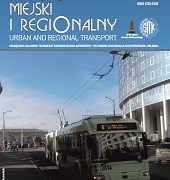Abstract 6/2018
Table of content
Robert Kruk, Przemysław Brona – The index method of freight forecasting based on macroeconomic indicators
Maciej Kaczorek, Mikołaj Klikowski, Adam Konarski, Stanisław Lenart, Bartłomiej Mikulski, Michał Mokrzański, Michał Pyzik – Railway Freight Model – traffic model for the Polish Railways Company
Adam Konarski, Mikołaj Klikowski, Bartłomiej Mikulski, Michał Mokrzański, Michał Pyzik – Traffic Model for the Polish Railways Company – passenger module
Renata Żochowska, Aleksander Sobota, Grzegorz Karoń, Piotr Soczówka – Perception of traffic smoothness in the light of survey
Abstracts
Robert Kruk, Przemysław Brona
The index method of freight forecasting based on macroeconomic indicators
Abstract: The article presents methodology of forecasting railway and road transport of goods based on macroeconomic indicators (e.g. changes of GDP). Changes of the total volume of railway and road transport (inland transport) year over year may be estimated by determining the function of flexibility of those changes depending on changes of DGP. Basing on the estimated indicators of transport changes, there is a possibility to forecast an annual transport of goods in a considered period of time, whereby changes in inland transport are defined separately for defined groups of goods. Railway transport of goods in the particular year for defined groups of goods is specified as a share of railway transport in the total freight inland transport. Indicators of share of railway transport are also the function of changes in GDP. The article also presents the methodology for determining the function of flexibility for both the changes of transport in particular groups of goods and the share of railway transport in total inland transport of goods.The methodology presented in the article may be applied for developing forecasts in documentation of feasibility studies for transport infrastructure.
Key words: transport, railway transport, transport of goods, transport forecasts
Maciej Kaczorek, Mikołaj Klikowski, Adam Konarski, Stanisław Lenart, Bartłomiej Mikulski, Michał Mokrzański, Michał Pyzik
Railway Freight Model – traffic model for the Polish Railways Company
Abstract: PKP Polskie Linie Kolejowe S.A. so far has not a tool allowing to assess impact of changes in service on the freight transport market. The article refers to the assumptions adopted for the Traffic Model (pol. Model Ruchu) construction, selected solutions that have been applied and the obtained results. As a part of the work, an attempt has been taken to create a standard-5-step freight model based on: trip generation, trip distribution, mode choice, loading of goods on vehicles and assignment. The lack of data available has been identified to reliably calculate each of the 5 steps. Due to the lack of data, it was decided to calculate only the rail traffic. This is the reason why this model is called a Railway Freight Model (pol. Kolejowy Model Towarowy), in which the 5-step model has been narrowed down to three steps: 1. loading on vehicles taking into account the used train length, 2. assignment, 3. calculation of the trip generation in reference to base movement and differences in network parameters. Each step was characterized in the content of the paper.
Key words: transport modelling, freight transport, railway transport, capacity
Adam Konarski, Mikołaj Klikowski, Bartłomiej Mikulski, Michał Mokrzański, Michał Pyzik
Traffic Model for the Polish Railways Company – passenger module
Abstract: PKP Polskie Linie Kolejowe S.A. so far has not a tool allowing to assess impact of changes in service on the passenger and freight transport market. Investments were analysed with Traffic Model (Model Ruchu) allowing to test the investment impact on the transport market on a national scale, as well as to make investment decisions on the base of recommendations from the analyses. The Traffic Model, built by the PKP PLK S.A. employees, allows to compare rail level of service with other modes of transport. A standard-4-step model was used and the zone definition refers to a single municipality. The influence of the surrounding municipalities is taken into account for travel generation. The model uses a multifactor function to calculate mode choice. Public transport, including bus transport, is calculated on the base of timetables. The decision paradigm of users of the transport system was based on a set of trip surveys obtained from territorial self-government units and a pilot study conducted by the National Statistical Authority. The article presents the assumptions and conclusions from the implementation of the PKP PLK S.A. Transport Model – passenger module.
Key words: transport modelling, passenger transport, railway transport, capacity
Renata Żochowska, Aleksander Sobota, Grzegorz Karoń, Piotr Soczówka
Perception of traffic smoothness in the light of survey
Abstract: Transportation system users’ perception of traffic conditions has a significant influence on decisions they make connected with performing travel and consequently on their travel behaviour. Therefore, results of research in this field provide information useful for building and calibrating travel model. Traffic conditions may be described using various measures, both quantitative (i.e. delay, length of queues, indices of stoppages) and qualitative (level of service). Transportation system users’ decision processes depend on individual insights connected with travelling on the street network. Also, ‘smooth traffic’ may be a subjective term. Perception of traffic smoothness depends on the type of user, his or her preferences, type of travel, technical parameters and road’s location. Research conducted in this field may be therefore one of the stages of building a model describing road traffic smoothness function, which may be a supplement of qualitative and quantitative measures. In this article – besides the presentation of the state of the art – also results of surveys conducted among inhabitants of the Upper Silesian metropolitan area and Bielsko-Biała regarding the perception of urban traffic conditions in the context of traffic smoothness have been presented. Answers to questions in the survey provide an idea how drivers and passengers of private means of transport understand the term ‘smooth traffic’ and which factors significantly worsen smooth traffic. This may be a contribution to extend the modal split models by a factor taking into account the choice of the transport system due to the flow of traffic.
Key words: traffic smoothness, travel modelling, decision problem in transport

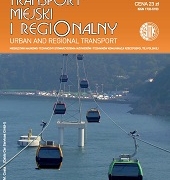
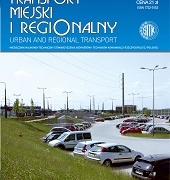 SITK RP
SITK RP 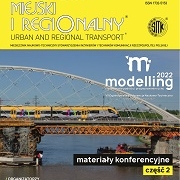 Wydawnictwa SITK RP
Wydawnictwa SITK RP 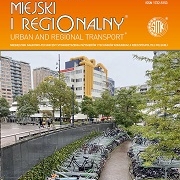 SITK RP
SITK RP 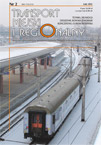 SITK RP
SITK RP 